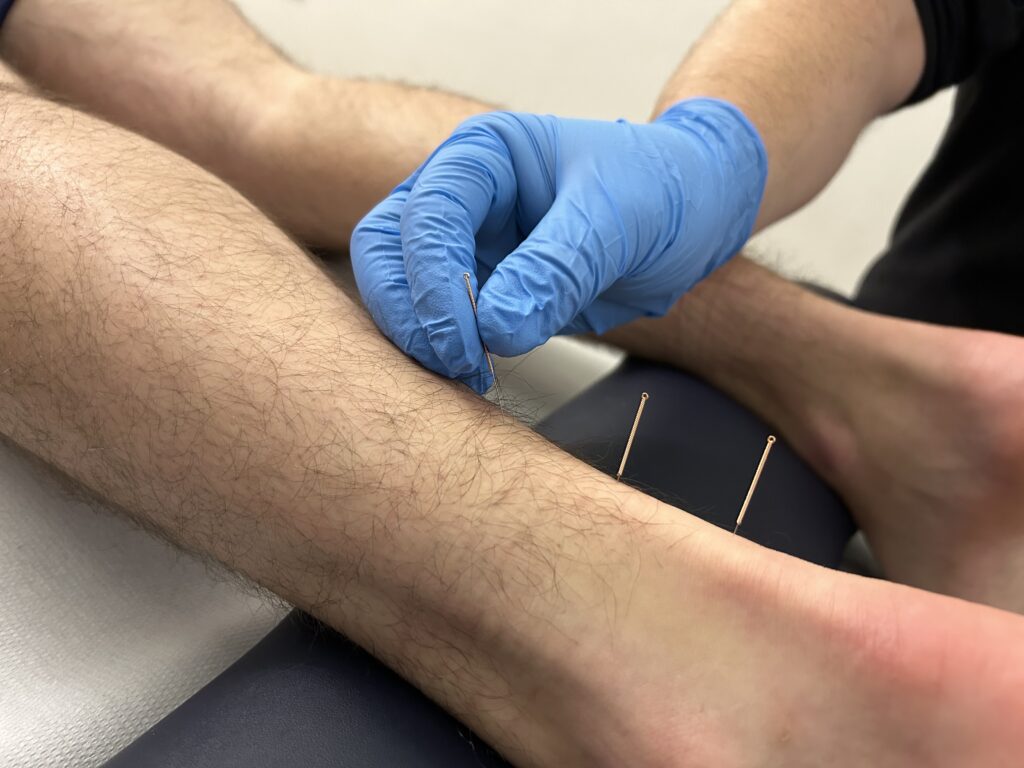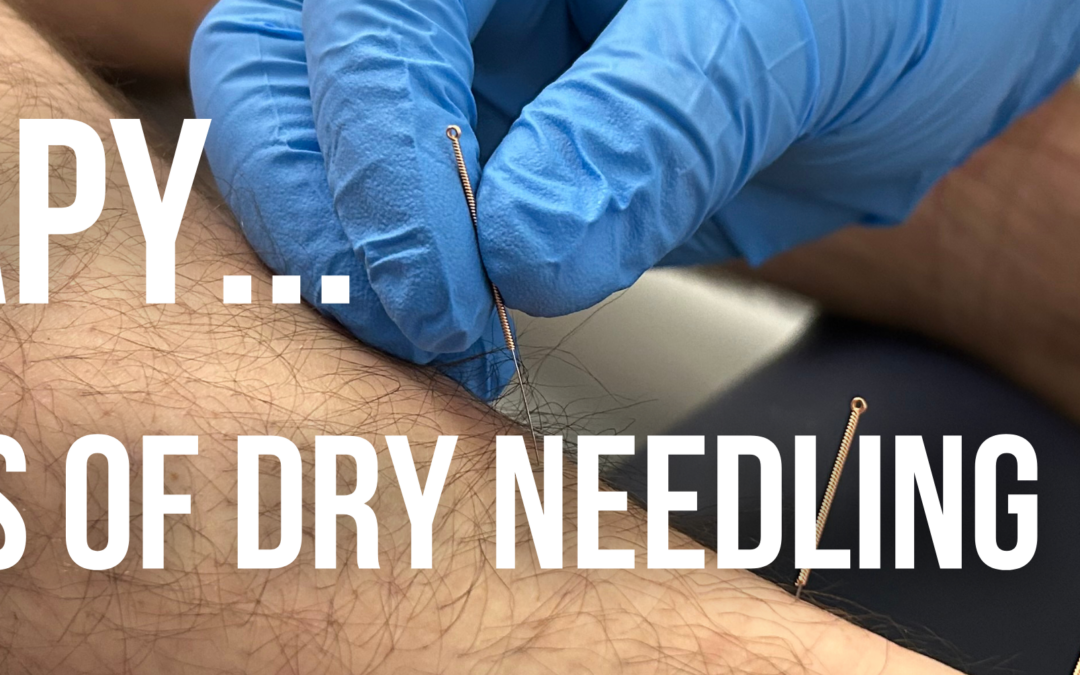Despite its growing popularity, many people are still unfamiliar with what dry needling entails and how it can benefit them. This blog will provide an in-depth look at dry needling therapy, covering what it is, how it works, the benefits of it and the conditions it can treat.
What is Dry Needling?
Dry needling is a therapeutic technique that involves the insertion of thin, solid monofilament needles into the skin to target trigger points that might be in muscle or connective tissue below. Unlike acupuncture, which is rooted in traditional Chinese medicine and focuses on balancing energy flow, dry needling is based on Western medicine principles and is used primarily to treat musculoskeletal pain.
Trigger points, often referred to as “knots,” are hyperirritable spots that can cause pain and stiffness. These trigger points may develop due to muscle overuse, injury, or prolonged periods of inactivity. Dry needling targets these trigger points to release tension and accelerate healing.
Mechanisms of Dry Needling
When the needle is inserted into a trigger point, it stimulates the muscle to contract and then relax, “resetting” the muscle fibres. This process, known as a local twitch response, helps to relieve muscle tension and reduce pain.
Additionally, the insertion of the needle triggers a series of biological responses in the body. It increases blood flow to the affected area, promotes the release of endorphins (the body’s natural painkillers), and activates the immune system to repair damaged tissue.
Dry needling will rarely be used on its own. Often, it will be used alongside some kind of manual therapy like sports massage.

Benefits of Dry Needling
- Pain Relief: Dry needling is effective in reducing pain, particularly in cases where trigger points are the primary source of discomfort.
- Tension Relief: Releasing muscle tightness and restoring normal muscle function.
- Enhanced Recovery: For athletes or individuals recovering from injuries, dry needling can aid the healing process by promoting tissue repair.
- Non-Pharmaceutical Treatment: As a non-invasive therapy, dry needling provides pain relief without the need for medication, making it an attractive option for those seeking natural alternatives.
- Targeted Therapy: Dry needling allows for precise targeting of specific trigger points, making it highly effective for localised pain and dysfunction.
- Perception Change: It’s easy to forget the “qualitative” effects of this treatment. Often, after dry needling therapy people feel a psychological sense of relief, helping calm them.
What Conditions Can Dry Needling Help With?
- Myofascial Pain Syndrome: Characterised by the presence of trigger points in the muscles, this condition often leads to pain in other areas of the body. Dry needling is particularly effective in addressing these trigger points and reducing pain.
- Chronic Neck and Back Pain: Dry needling can help alleviate pain and muscle tightness in the neck and back, which are common areas for chronic discomfort.
- Tendonitis: Conditions such as tennis elbow or Achilles tendonitis can benefit from dry needling, as it helps reduce inflammation and promote healing in the affected tendons.
- Headaches and Migraines: Tension headaches and migraines that are related to muscle tightness in the neck and shoulders can be effectively managed with dry needling.
- Sports Injuries: Dry needling is often used by athletes to treat injuries such as muscle strains, sprains, and overuse injuries, helping them return to their activities more quickly.
How Dry Needling Treatment Works
If you’re considering dry needling therapy, it’s important to understand what to expect during a treatment session. Typically, the process involves the following steps:
- Assessment: Your therapist will begin by assessing your condition, identifying the areas of pain, and locating the specific trigger points that need to be treated – they may say you don’t need needling therapy and recommend other treatment!
- Preparation: The treatment area will be cleaned, and you may be asked to relax or position yourself in a way that allows easy access to the target trigger points.
- Needling: The therapist will insert the thin needles into the identified trigger points. You may feel a slight prick or a deep ache as the needle penetrates the muscle.
- Relax: As best you can, try to relax and not contract any muscles or move.
- Post-Needling Care: After the needles are removed, the treated area may feel slightly tender. It’s important to hydrate and not overstretch the area at this point.
We offer dry needling here at tfd therapy alongside other treatments and manual therapy so don’t hesitate to get in touch if you think we can help you with your aches, pains or injuries!

